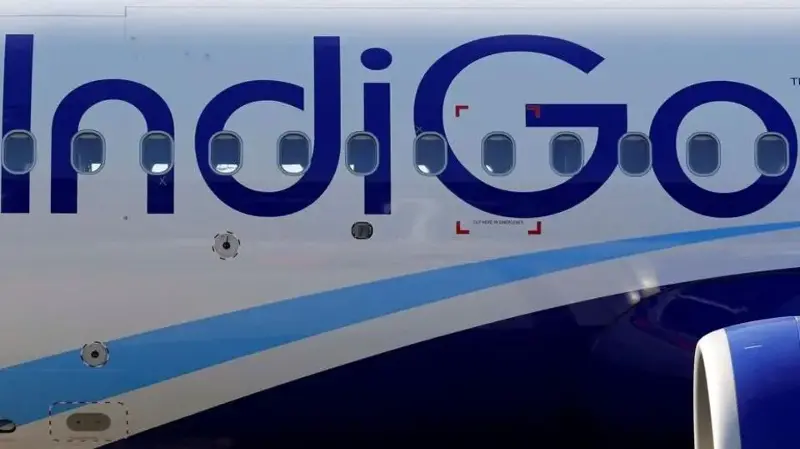
IndiGo, India’s largest carrier, declared its Q2-FY26 and H1-FY26 results on Tuesday, seeing a loss of ₹2,582.1 crore in Q2-FY26 on the back of the impact of huge currency depreciation. The airline recorded a surplus of ₹103.9 crore before the impact of foreign exchange, with the depreciating rupee now hurting the airline, which has significant dollar-denominated bills.
When the pandemic hit the world, there were only a handful of airlines which had the financial might and the will to sustain the whirlwind which hit them. On the other side of the pandemic, such airlines became even more powerful and mightier, and this helped shape what post-pandemic world was all about, shortages of just about everything in the field of aviation. IndiGo was one of them with domestic competition faltering and the regional heavyweights like AirAsia and Lion Air not being able to cope with the pandemic. IndiGo is now targeting anywhere between 30% and 40% of its fleet being outside operational lease by 2030. This is also the same period when the airline is targeting its fleet to have around 600 planes, as was announced earlier.
An operational lease involves airlines having a lease agreement for a fixed tenure with the lessor and operating the plane for that tenure before re-delivering the plane in the condition stated in the contract. Lessors market the plane to other carriers post that. Traditionally, IndiGo had a six-year lease cycle which helped the airline return the planes to the lessors before the expensive D-Checks were due. However, things have changed since then, for both the aviation OEMs and IndiGo. A finance lease is a long-term lease that transfers most risks and rewards of ownership to the lessee, treating it like a financed purchase, while an operating lease is a shorter-term lease where the lessor retains ownership and risk. Key differences include a finance lease's long-term commitment and ownership transfer option at the end, versus an operating lease's flexibility for short-term use without ownership transfer. In simple terms, an operating lease is more like rent, while a finance lease is owning the asset when its EMIs are complete. IndiGo is also focusing on owning the assets, which it had started pre-pandemic but took a break due to the relatively weaker financials and uncertainty during the pandemic.
Aviation is a cyclical business and a razor-sharp focus is what differentiates great airlines from those that barely survive. IndiGo now has 14 owned aircraft, 62 on finance lease and 333 on operating lease. Just a year ago, at the end of the September quarter of 2025, the numbers stood at 3 owned, 37 on finance lease and 345 on operating lease.
Preparing for next rainy day?
IndiGo is using its current cash position and environment to shore up its balance sheet as it gears up to induct the A350s. Aviation, apart from being cyclical, is also impacted by sudden geopolitical events which can make or break airlines. Having assets on the balance sheet can then be the saviour because these assets can be used to execute Sale and Leaseback agreements, which help with cash in times of need. IndiGo itself experienced it when it executed Sale and Leaseback for the ATRs during the pandemic. These aircraft were on lease until then.
IndiGo might have tried this to a very small extent and at a time when its balance sheet did not really need it, but Jet Airways continued its operations as long as it had aircraft on finance lease and kept doing a periodic Sale and Leaseback transaction. Coupled with the sale of its land in Bandra Kurla Complex and valuation of Frequent Flier Program, the airline managed to continue operating, only to go down when all avenues came to an end, with no more tranche of funds from the frequent flier program and almost all narrowbody aircraft with residual life already being transacted for Sale and Leaseback to raise cash.
Groundings continue
IndiGo continues to have over 40 planes grounded, all powered by Pratt & Whitney. The problem started in mid-2023 and has since continued to haunt operators across the world. The airline currently does not have visibility on when this would end, though the percentage of Pratt & Whitney-powered planes in IndiGo’s fleet is becoming lower and lower by the day as all its new inductions are powered by rival CFM. Both the airline and the OEM have been mum about the compensation, but IndiGo had informed in the past that it indeed was getting some compensation, which was being accounted as revenue from operations. It remains unclear how much revenue is from operations and how much is from compensation.
A major boost to the airline will come when it gets rid of the 26 A320ceos, which consume more fuel than the A320neos, and the Pratt & Whitney-powered planes are out of IndiGo’s fleet.
The author, Ameya Joshi, is an aviation analyst.
